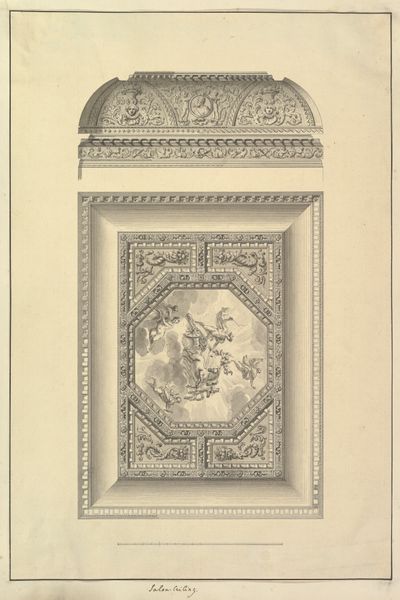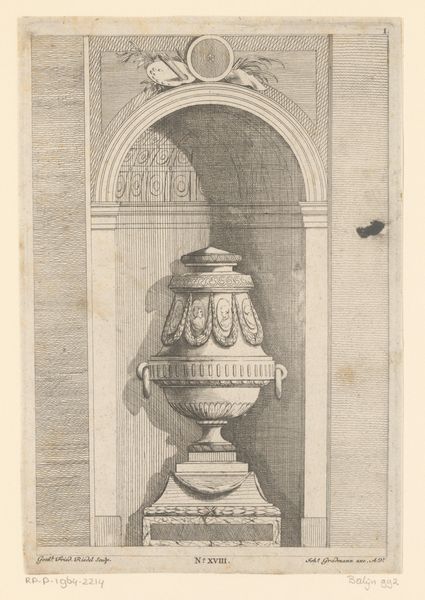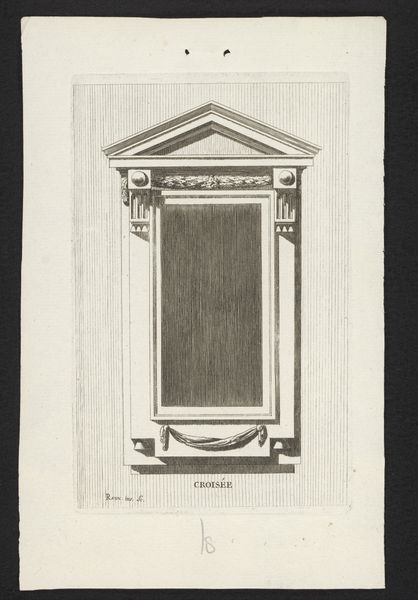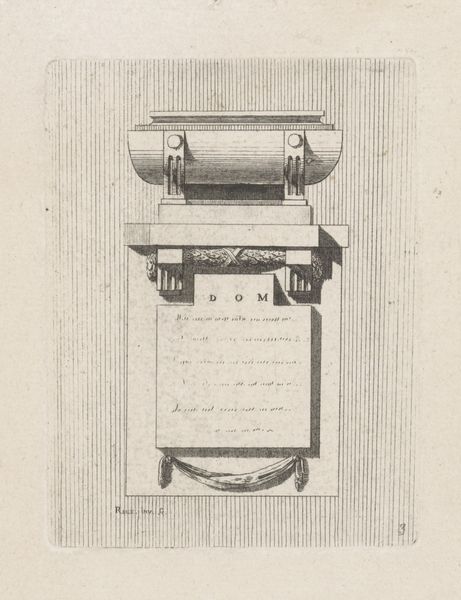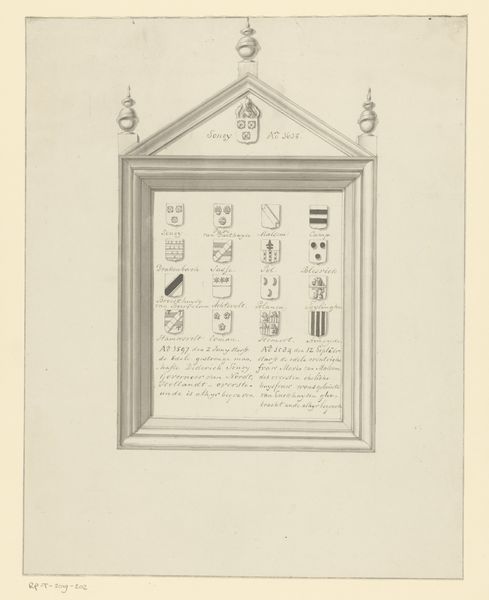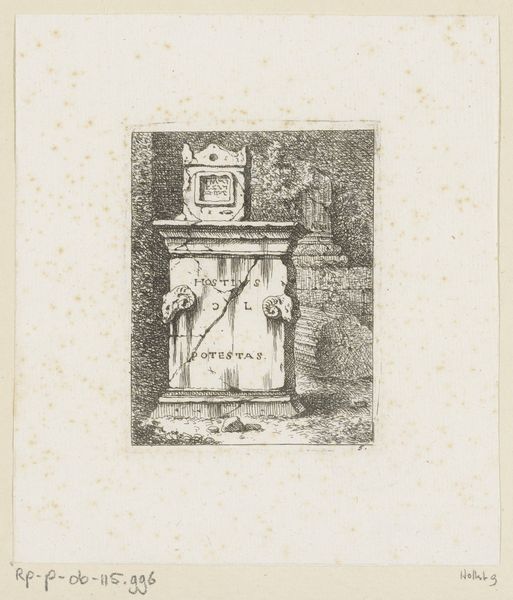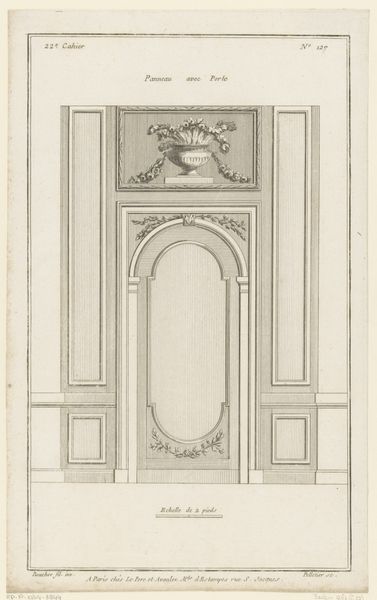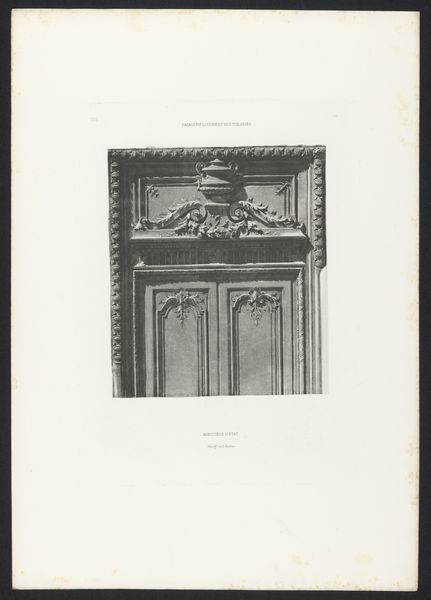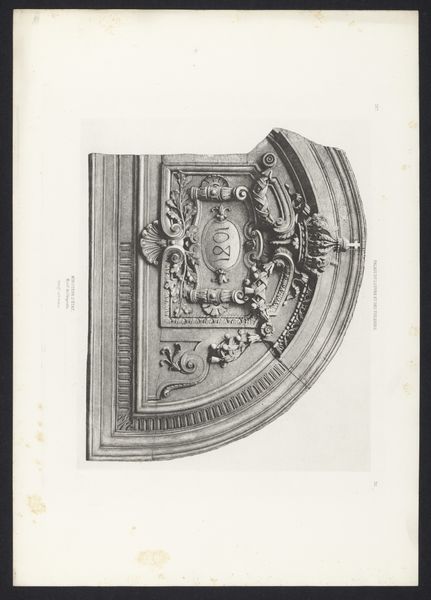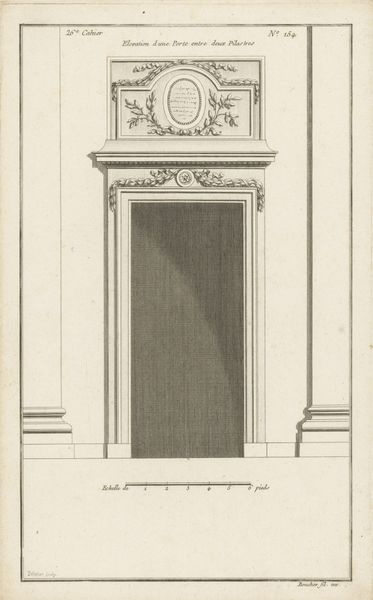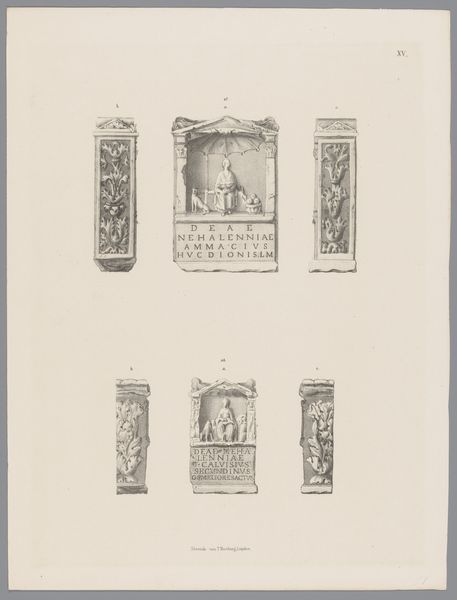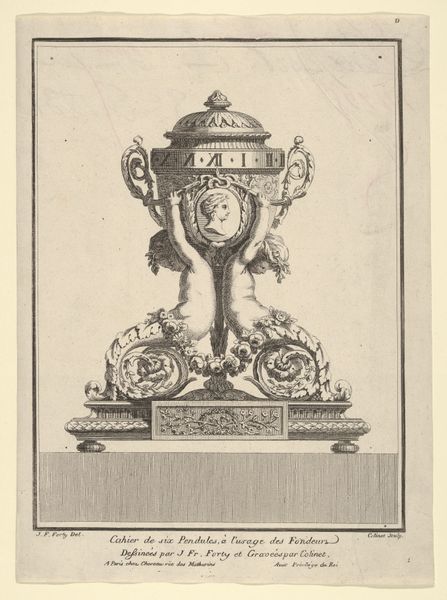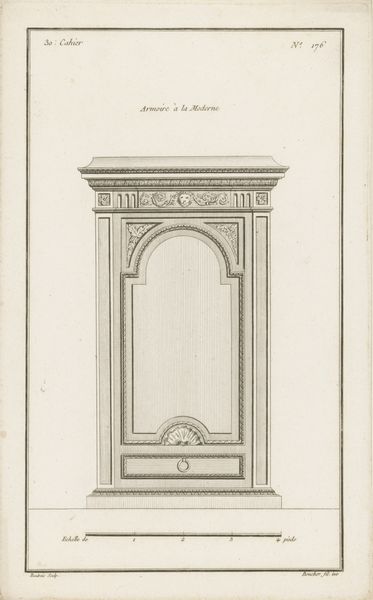
drawing, print, paper, engraving
#
drawing
#
baroque
# print
#
paper
#
geometric
#
line
#
history-painting
#
engraving
Dimensions: height 139 mm, width 97 mm
Copyright: Rijks Museum: Open Domain
Curator: Welcome. We are looking at "Epitaaf met fronton," a drawing by Raux from 1758. It’s an engraving printed on paper, embodying the Baroque style. Editor: The immediate impression is of quiet solemnity. The stark lines and limited shading create a feeling of restraint, almost austere, despite the Baroque styling. What were these epitaphs about in that era? Curator: In the 18th century, epitaphs moved beyond mere biographical accounts; they engaged in political rhetoric and asserted the subject’s contribution to society. Death became an opportunity to solidify legacies and negotiate power through memory. The architecture mirrors the aesthetic of Baroque structures of remembrance, reflecting values around lineage and authority. Editor: It's interesting how the geometric rigidity contrasts with the flowing text and the garland details. Can you speak more about this combination of angularity and ornamentation? Curator: This duality speaks to the era's negotiation between classical ideals and the expression of individual sentiment. The strict geometry represents the Enlightenment's emphasis on reason, while the ornamentation hints at personal feeling. What do the symbols speak to you? Editor: Well, garlands historically are about celebration and triumph, often used in the Roman period to honor military generals, yet here their presence on this drawing meant to be about a historical marker, seems very subtle in expressing how this persons’ actions during their life has affected their history. They also highlight and speak about Baroque period’s aesthetic. Curator: The garlands and Baroque style reflect the deceased's place within broader cultural and religious memory, creating a link between individual identity, faith, and societal power. These symbols legitimize authority while gesturing towards redemption. This type of art reveals much about society's attitude toward its own elites. Editor: I think I'll walk away from this piece today really pondering about this historical role of preserving legacies for the political power in that particular period in Europe. It certainly opens an interesting viewpoint. Curator: For me, considering the cultural significance of symbols that blend rationality with sentiment provides a vital look at the evolving dialogue between societal order and our intimate human experiences.
Comments
No comments
Be the first to comment and join the conversation on the ultimate creative platform.

